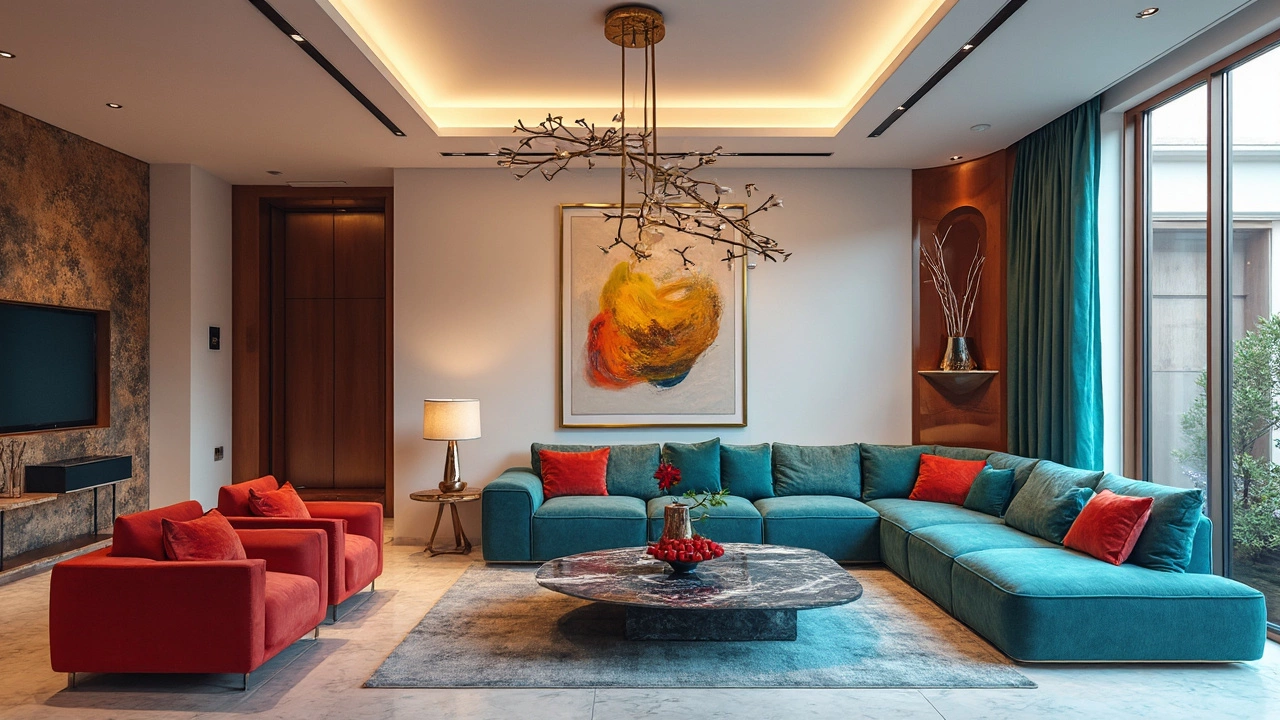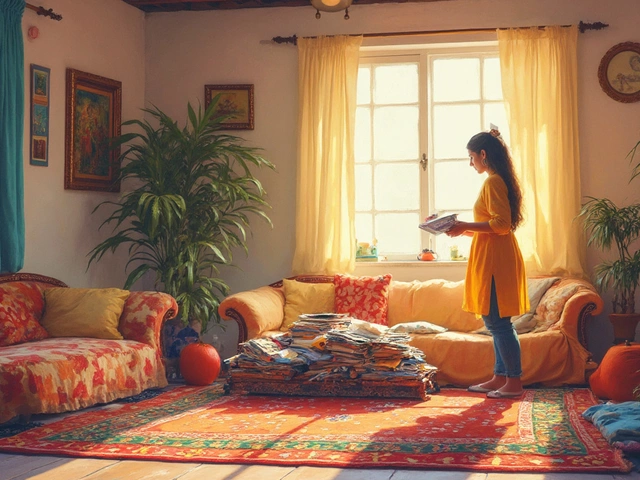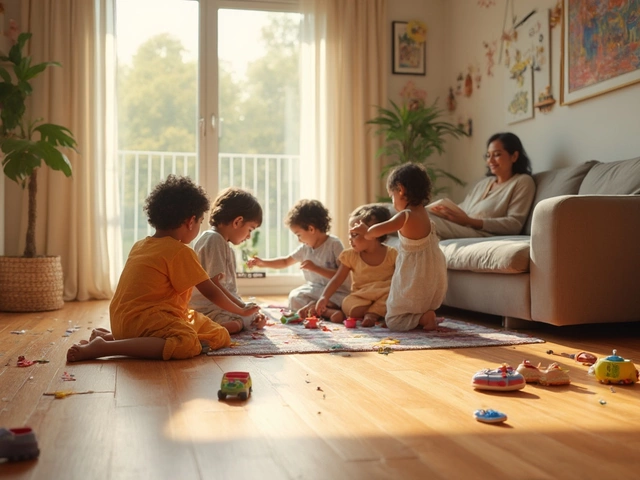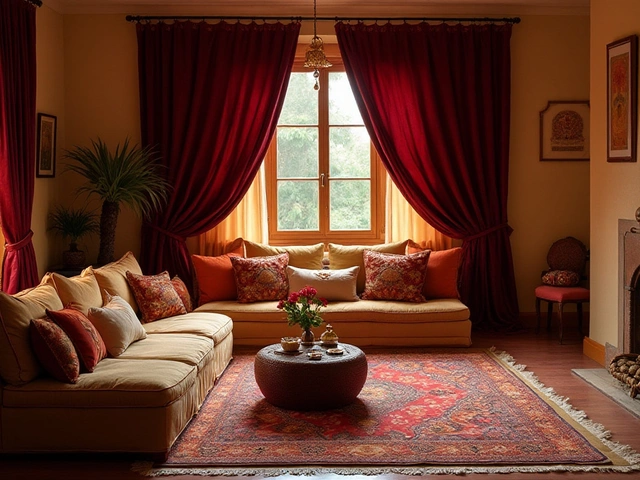When you're sprucing up your home, the terms "modern" and "contemporary" probably pop up a lot. But guess what? They're not the same thing, even though folks often use them interchangeably. Knowing the difference can save you from a style mishmash that doesn’t quite fit together.
Modern interiors? Think way back to the early to mid-20th century, when clean lines and simplicity were the rage. Icons like Frank Lloyd Wright and the Bauhaus movement set the stage. The goal? Functional and straightforward, driven by the mantra "form follows function." If you dig simplicity and a bit of nostalgia, this might be your jam.
Now, contemporary design is all about the now. It's fluid, ever-shifting, and doesn’t tie itself to any particular time frame. If you're a fan of latest trends, cutting-edge materials, and a style that evolves with the times, contemporary could speak your language.
- Understanding Modern Interiors
- Getting to Know Contemporary Style
- Key Differences
- Real-Life Examples
- How to Choose Your Style
- Practical Tips for Mixing Styles
Understanding Modern Interiors
Alright, let's jump into what makes modern interiors so special. Imagine stepping into a room where everything feels streamlined, with a clear sense of order. This style originates from the early to mid-20th century, a response to ornate designs that were all the rage before.
Modern design is all about functionality. It strips away the excess and focuses on keeping things simple but meaningful. Clean lines and minimalism define this style. You won't find frills or fluff here. It's practical, with a touch of elegance.
The Principles of Modern Design
- Functionality Matters: Everything has a purpose. If it's not functional, it's out.
- Open Spaces: Modern design loves open floor plans. It creates a sense of flow and space.
- Natural Materials: Think wood, leather, and stone. These materials connect the design to nature.
- Neutral Colors: Whites, greys, and earth tones. They keep the vibe calm and cohesive.
Design Icons and Influences
No talk about modern interiors is complete without mentioning design heavyweights like Frank Lloyd Wright. He pushed the boundaries by integrating structures with their surroundings, giving birth to what we often identify as modern today. Then there's the Bauhaus movement, championing form and function, influencing everything from architecture to furniture.
You and Modern Interiors
If you're thinking about a modern interior for your space, focus on finding a balance between form and function. Consider furniture that's sleek but comfy, and look for pieces that offer practicality without sacrificing style. And remember, less is often more.
Putting It All Together
In the world of modern interior design, simplicity speaks volumes. So, dive in, explore, and see how this style can transform your living space into a clean, serene retreat.
Getting to Know Contemporary Style
Contemporary interior design is like the chameleon of home styles. It's always in motion, adapting to new trends and ideas. The beauty of this style lies in its flexibility, making it perfect for those who love to switch things up every few years.
Key Characteristics
One thing to know about contemporary design is that it embraces the latest materials and technology. This style often highlights sleek metals and glass, offering a minimalist vibe that feels both light and airy. Unlike modern interiors, which stick to a set playbook from the past, contemporary interiors constantly evolve.
Neutral Colors with a Splash
Contemporary spaces often start with a neutral color palette as a base—think whites, creams, grays, maybe some soft beige. But don't worry, it's not bland. They add pops of color with bold artworks or furnishings, creating focal points throughout the space. This balance keeps the room feeling dynamic while still cozy.
Furniture and Layout
Furniture in contemporary design is often simple but powerful in design. You'll see lots of smooth, geometric shapes and clean lines. The layout is usually open; rooms flow into each other seamlessly, which is great for social gatherings and fluid living spaces. If you like an airy atmosphere that’s both inviting and stylish, this might be right up your alley.
Lighting and Textures
Pay attention to lighting—it's crucial in contemporary spaces. Use lots of natural light wherever possible. Floor-to-ceiling windows or big skylights? Perfect. Accent lighting also plays a massive role, often showcased through signature lighting fixtures that are almost pieces of art in their own right. Don’t underestimate textures, too. Combining smooth surfaces with textured fabrics like wool creates a balanced and tactile space.
The best part? A contemporary interior is never the same from one year to the next. It’s all about staying current and fresh, perfectly reflecting the ever-changing world around us.
Key Differences
So, what really sets modern interior design apart from contemporary interior? Let's break it down.
Time Frame vs. Flexibility
Modern design is a nod to a specific era. It's rooted in the early to mid-20th century, celebrating simplicity and functionality from that time. In contrast, contemporary design is a chameleon. It's here and now, always evolving based on the latest trends and tech. If you love keeping up with the latest fads, contemporary is your playground.
Form and Function
With modern interiors, you'll see a 'form follows function' approach. Furniture is purposeful, stripped of unnecessary fluff. Contemporary design, however, focuses on form and strives for visual impact. It’s all about striking a balance between comfort and cutting-edge aesthetics.
Materials and Textures
Modern interiors often use natural materials like wood and leather. They're all about authenticity. Meanwhile, contemporary interiors embrace everything from glass and metals to concrete and even sustainable materials. If it's fresh and innovative, it's in.
Color Schemes
Color in modern design tends to be neutral and natural—think whites, earth tones, and primary shades. Contemporary interiors, however, are open to a wider palette. Bold and contrasting colors often make an appearance, keeping rooms vibrant and dynamic.
| Aspect | Modern | Contemporary |
|---|---|---|
| Era | Early to mid-20th century | Current and evolving |
| Materials | Natural | Innovative |
| Color Pallette | Neutral | Varied and bold |
Understanding these distinctions can guide you in choosing the right style or even blending both. After all, it’s about what feels like home to you.

Real-Life Examples
Let's dive into some real-world homes to see how modern interiors and contemporary interiors play out. Imagine a home inspired by the 1970s—it embodies modern design ethos with its clean lines and uncluttered spaces. There's often American walnut wood flooring, combined with sleek furniture pieces like Eames chairs—simple yet iconic.
In contrast, consider a high-rise apartment downtown, reflecting contemporary style. A central feature might be a statement-making, tech-savvy coffee table with built-in touchscreen controls for lighting and entertainment. Expect to see cutting-edge materials incorporated, like recycled glass counters or a concrete feature wall.
Case Study: Modern Bungalow
Picture a bungalow where modern aesthetics rule. The living room has large windows for natural light, white-painted walls, and sparse but meaningful decor like a classic Noguchi coffee table. Meanwhile, the kitchen sticks to neutral tones, punctuated by stainless steel appliances.
Case Study: Contemporary Urban Loft
Contrast that to a trendy urban loft. Here, boundaries blur between spaces, with an open floor plan. It features a mix of textures—soft wool rugs against raw, exposed brick. The color palette shifts with contemporary trends—a splash of bold color on one wall, maybe Pantone's Color of the Year.
Sometimes, you'll find elements from both styles mixed in a single home, blending the timeless simplicity of modern with the dynamic flair of contemporary. Homes like these can look stunning and feel welcoming—proving there's room for both styles in the right mix.
How to Choose Your Style
Picking between a modern interior and a contemporary interior might feel like a head-scratcher, but it doesn’t have to be. The trick is understanding what vibe you're going for.
Your Focus: Timeless or Trendy?
Do you want your home to be timeless or on-trend? If you're leaning towards something that looks as good in a decade as it does now, a modern interior might be the way to go. Modern interiors rely on mid-20th-century principles, meaning they’ve already stood the test of time.Contemporary interiors change with the trends. You enjoy updating your look with the latest colors and styles. Just remember, it's an ongoing process!
Understanding Your Space
See your space and its strengths. Open layouts work great for the sleek lines of modern design, as they emphasize that minimalist vibe. For contemporary style lovers, look for standout architectural details you can play up or revamp."The home should be the treasure chest of living." — Le Corbusier
Mix and Match
Why not take the best of both worlds? A hybrid approach gives your space personality. Add a modern classic piece here, like a leather Eames chair, and mix in a current trend, like a statement light fixture.Here's a simple way to decide:
- Budget: Contemporary styles can require frequent updates, while modern pieces are often investment buys.
- Lifestyle: Think about your daily activities. For instance, if you host often, you might prefer the cozy, welcoming vibe of a modern interior.
- Personal Taste: Your gut instinct is usually right. Which style are you drawn to naturally?
Remember, the right choice is what makes you feel at home. So whether you choose a crisp modern interior or a dynamic contemporary interior, or a comfy mix, trust your style!
Practical Tips for Mixing Styles
So, you're into both modern interior and contemporary interior design and wondering how to blend them without causing a style clash? Don't worry—melding these two can create a unique and dynamic living space if done right.
Start With a Neutral Palette
One useful trick is to begin with a neutral color scheme. Whites, grays, and blacks act as a versatile backdrop. A neutral palette provides a canvas where both styles can shine without competing for attention. Plus, it makes the room feel more cohesive.
Incorporate Clean Lines
Both styles appreciate clean lines, though modern leans more toward retro simplicity, while contemporary likes a bit more fluidity. By sticking to furnishings with clean lines, you're giving a nod to both worlds. A low-profile sofa or a streamlined dining table can do wonders.
Focus on Functionality
Keep functionality in mind. A hallmark of modern design is its practical nature. Meanwhile, contemporary interiors embrace current ideas. Opt for furniture pieces that serve a functional purpose but with a modern twist—like a sleek, extendable coffee table.
Add Trendy Accessories
This is where you can bring contemporary flair into your home decor. Add accessories like bold artwork or trendy light fixtures that scream "of the moment." They’ll offer some contrast to your modern foundation without feeling out of place.
Use Natural Materials
Modern style loves its wood, metal, and leather. Contemporary design, however, often incorporates newer materials. Think about combining natural wood pieces with elements like glass or polished metal to bridge the gap between eras.
Balance is Key
Always aim for balance. Too much of one style could drown out the other. A good rule of thumb is the 80/20 rule—let one style dominate while the other plays an accent role.
By following these practical tips, you'll have a living space that feels both timeless and current. So why choose one style when you can enjoy the best of both worlds?





